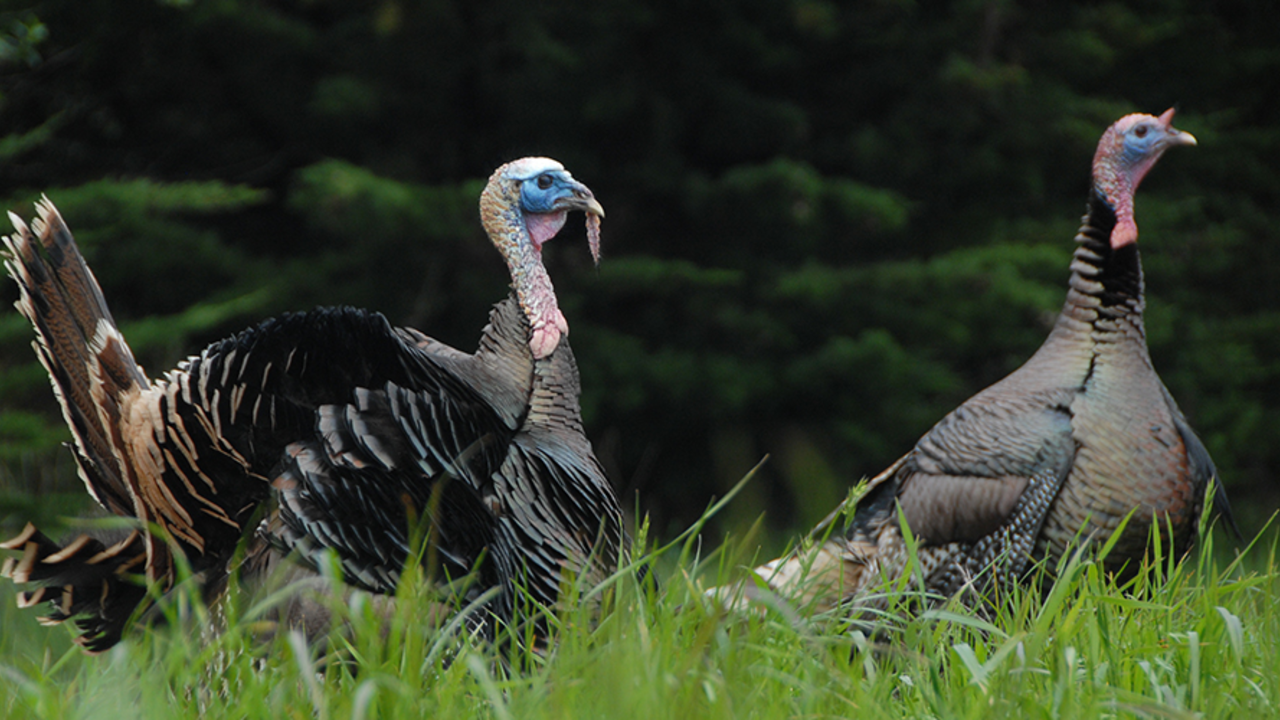Family Dinner: Holiday Foods' Park Relatives

Jessica Weinberg McClosky/Parks Conservancy
At your next holiday feast, impress friends and family with some fresh knowledge. Read on to learn the origins of popular holiday foods and discover their closest relatives, found in our parks. Please don’t forage for these items (quite a few are inedible)—but fill your plate with some food for thought!
Pumpkin or butternut squash (Cucurbita moschata)
Origin: Central America, northern South America
Park Relative: Wild cucumber (Marah fabaceus)
The wild cucumber, also called the California manroot (its tuber resembles a human, for those with a generous imagination), is a fellow member of the family Cucurbitaceae. Common across the state, this plant produces spiky, spherical fruits. Don’t toss this “cucumber” into your salad though—all plant parts are bitter (Marah is “bitter” in Hebrew) and essentially inedible. The fruit can cause vomiting and diarrhea!
Cranberry (Vaccinium macrocarpon)
Origin: Eastern U.S. and Canada
Park Relative: Pacific madrone (Arbutus menziesii)
In the large heath/heather family Ericaceae, one will find seemingly mismatched relatives like the low-lying cranberry shrub (rarely more than 6 inches high) and the evergreen Pacific madrone (which can grow to 100 feet tall in optimal conditions!). This West Coast native—easily identified in our parks by its papery red bark that peels away to expose preternaturally smooth wood—also produces edible berries.
Sweet potato (Ipomoea batatas)
Origin: Mexico
Park Relative: Pacific false bindweed (Calystegia purpurata)
Talk about an identity crisis: the sweet potato is often conflated with the botanically distinct yam—and only distantly related to the potato. The only crop plant in the “morning glory” family Convolvulaceae, the sweet potato does have relatives here in the parks, including the Pacific false bindweed and hillside false bindweed (Calystegia subacaulis). The seeds of many morning glories are toxic to humans.
Green beans (Phaseolus vulgaris)
Origin: Andes region, South America
Park Relative: Pacific pea (Lathyrus vestitus)
The “green bean” is just one variety of Phaseolus vulgaris, the common bean upon which much of the world’s population depends as a staple of their diet (the green beans are actually the unripe fruits of the plant!). Its familial classification, Fabaceae, is the third-largest land plant family and counts the Pacific pea among its members. With its lovely pinkish flowers, this California native is especially attractive to birds.
Domesticated turkey (Meleagris gallopavo)
Origin: United States and Mexico
Park Relative: Wild turkey (Meleagris gallopavo)
Well, actually, the domesticated turkey and wild turkey are the same species—and none of the subspecies are native to our parks. Unlike their luckless brethren that are bred for meat, the wild turkeys roaming around park locales such as Phleger Estate, Tennessee Valley, and Muir Woods are adept fliers. Tough and wily, they have become a scourge in oak savannahs, where their overgrazing damages native habitat.
Many thanks to staff in our Park Stewardship program and native plant nurseries for information and inspiration in support of this article.